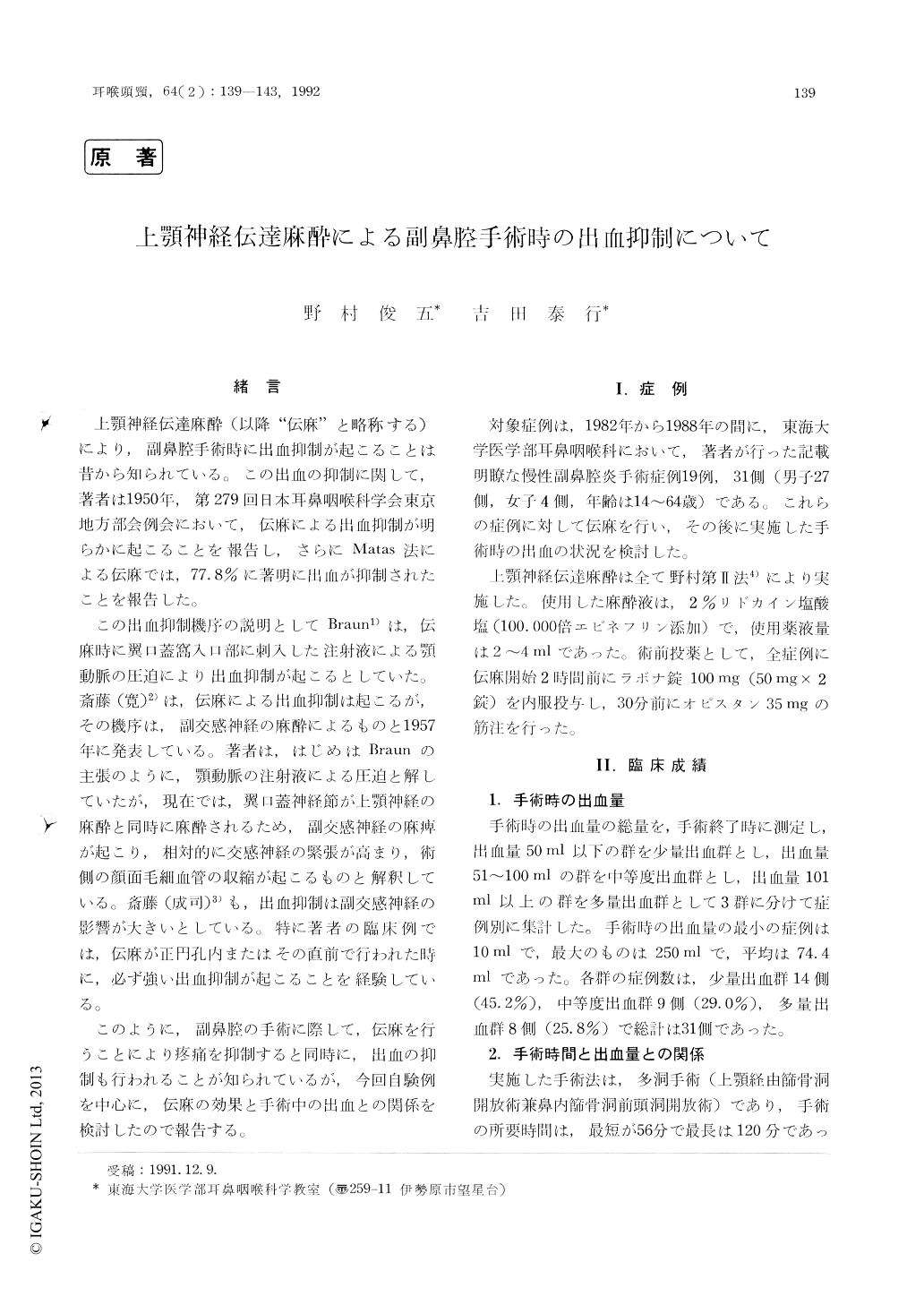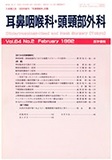Japanese
English
- 有料閲覧
- Abstract 文献概要
- 1ページ目 Look Inside
緒言
上顎神経伝達麻酔(以降“伝麻”と略称する)により,副鼻腔手術時に出血抑制が起こることは昔から知られている。この出血の抑制に関して,著者は1950年,第279回日本耳鼻咽喉科学会東京地方部会例会において,伝麻による出血抑制が明らかに起こることを報告し,さらにMatas法による伝麻では,77.8%に著明に出血が抑制されたことを報告した。
この出血抑制機序の説明としてBraun1)は,伝麻時に翼口蓋窩入口部に刺入した注射液による顎動脈の圧迫により出血抑制が起こるとしていた。斎藤(寛)2)は,伝麻による出血抑制は起こるが,その機序は,副交感神経の麻酔によるものと1957年に発表している。著者は,はじめはBraunの主張のように,顎動脈の注射液による圧迫と解していたが,現在では,翼口蓋神経節が上顎神経の麻酔と同時に麻酔されるため,副交感神経の麻痺が起こり,相対的に交感神経の緊張が高まり,術側の顔面毛細血管の収縮が起こるものと解釈している。斎藤(成司)3)も,出血抑制は副交感神経の影響が大きいとしている。特に著者の臨床例では,伝麻が正円孔内またはその直前で行われた時に,必ず強い出血抑制が起こることを経験している。
Inhibitory effect of the maxillary nerve blocking on bleeding during sinus operation has well been known to ENT surgeons. We carried out 31 sinus operations in 19 patients with chronic sinuisitis, and studied the relationship between the effect of the nerve blocking and amount of bleeding during the operation.
With review of literature, we concluded that the block of the maxillary nerve played an im-portant role not only for anesthesia, but also in control of bleeding.

Copyright © 1992, Igaku-Shoin Ltd. All rights reserved.


